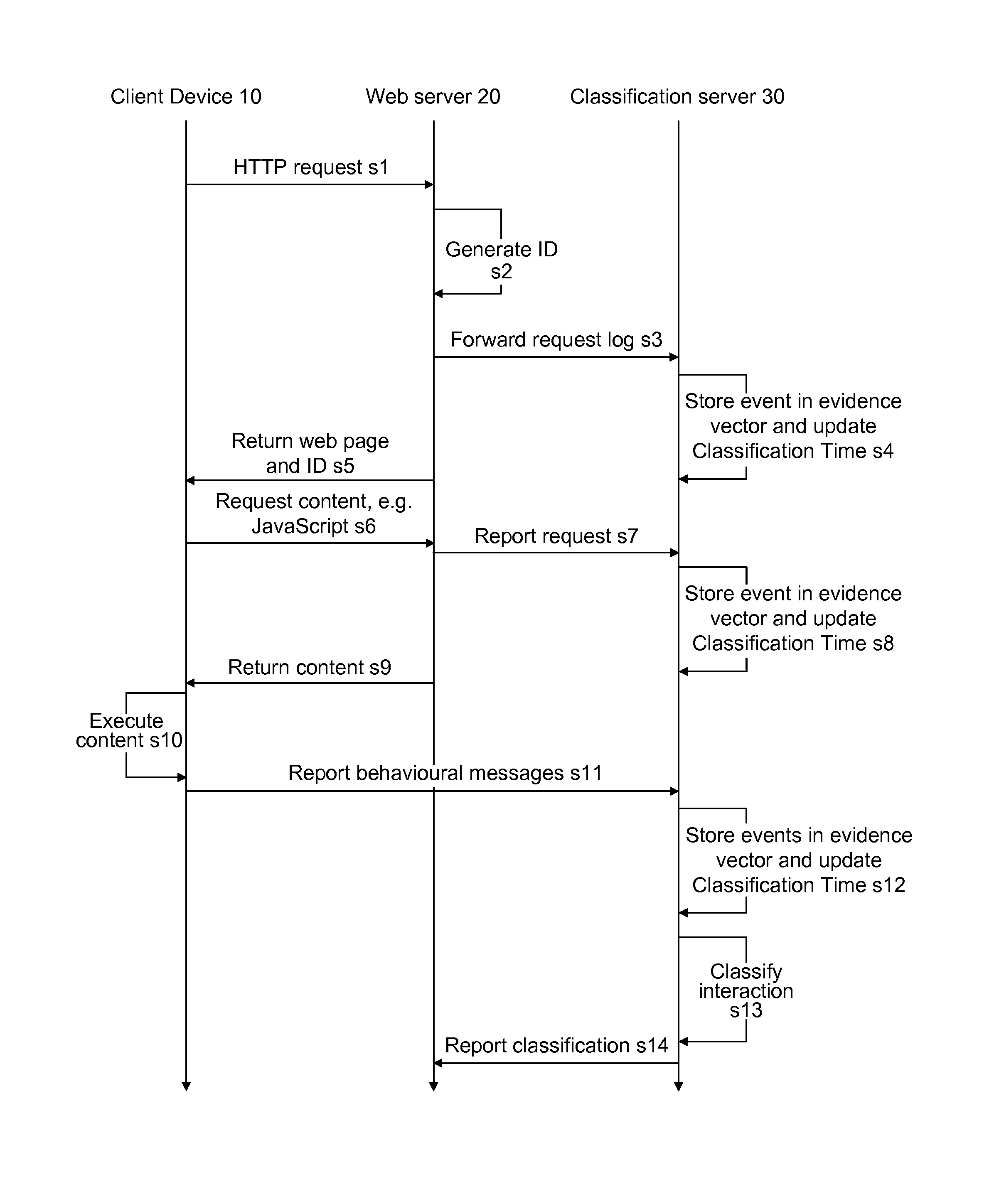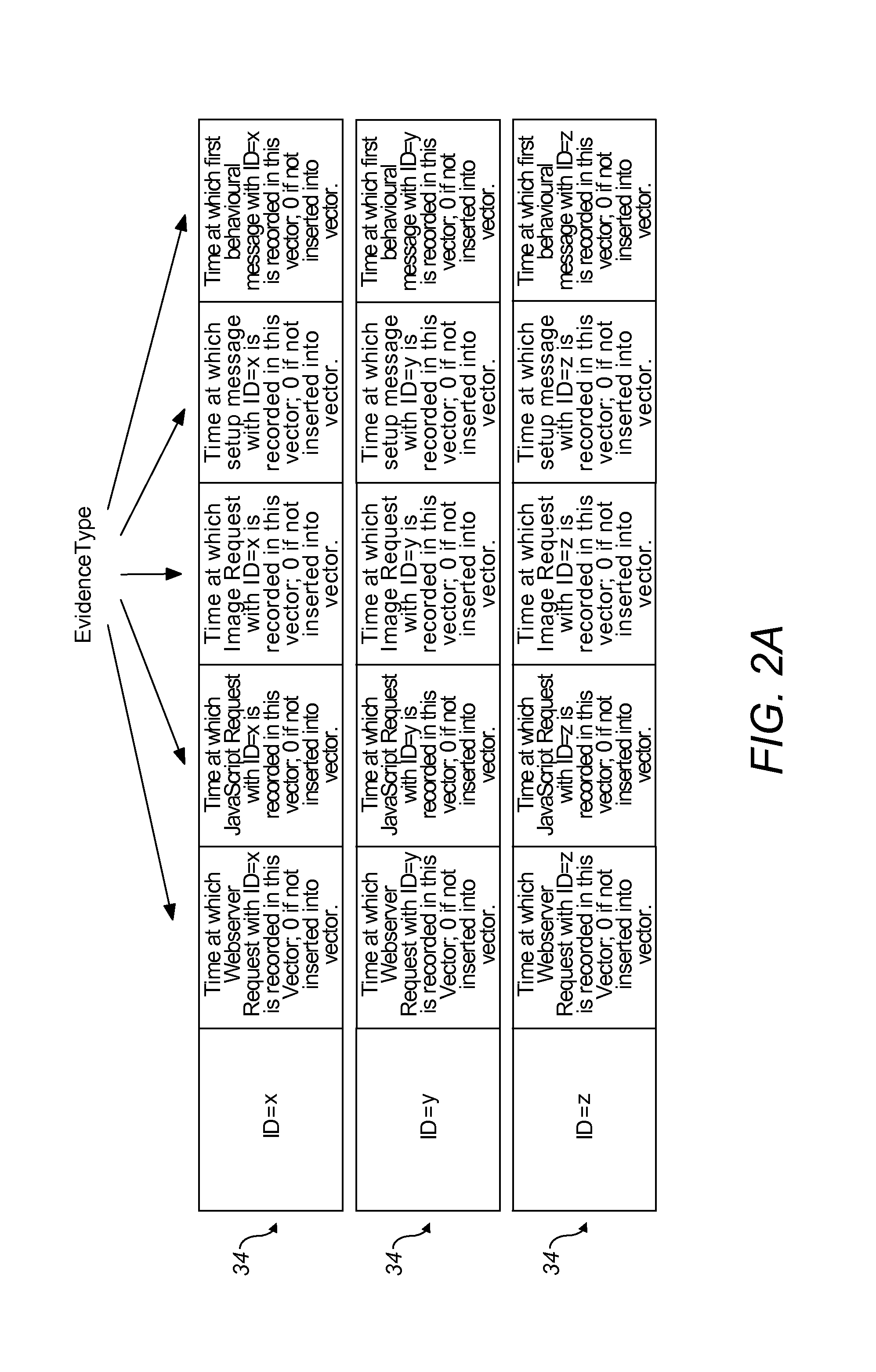Fast device classification
a technology of client devices and classification, applied in the direction of instruments, unauthorized memory use protection, marketing, etc., can solve the problems of insufficient speed and accuracy of client device classification, direct inconvenience to legitimate users, and the possibility of malicious agents hiding their true natur
- Summary
- Abstract
- Description
- Claims
- Application Information
AI Technical Summary
Benefits of technology
Problems solved by technology
Method used
Image
Examples
Embodiment Construction
[0051]FIG. 1 illustrates a content delivery system 1 that can be used in accordance with a first preferred embodiment of the present invention. The content delivery system 1 comprises a plurality of client devices 10, a plurality of web servers 20, a classification server 30, and a network 40. The network 40 connects the client devices 10, web servers 20 and the classification server 30 to each other. In the preferred embodiment, the network 40 is the internet.
[0052]The client devices 10 are not limited by form factor and may have various capabilities. Client devices 10 that may be used in accordance with the present invention include personal computers (PCs), mobile phones, games consoles, tablet devices and internet-enabled televisions. In most examples, the client devices will include a user interface for receiving user inputs. The user interface may take the form of a keyboard, remote control, pointing device, touchscreen or any other interface as appropriate. Furthermore, the c...
PUM
 Login to View More
Login to View More Abstract
Description
Claims
Application Information
 Login to View More
Login to View More - R&D
- Intellectual Property
- Life Sciences
- Materials
- Tech Scout
- Unparalleled Data Quality
- Higher Quality Content
- 60% Fewer Hallucinations
Browse by: Latest US Patents, China's latest patents, Technical Efficacy Thesaurus, Application Domain, Technology Topic, Popular Technical Reports.
© 2025 PatSnap. All rights reserved.Legal|Privacy policy|Modern Slavery Act Transparency Statement|Sitemap|About US| Contact US: help@patsnap.com



